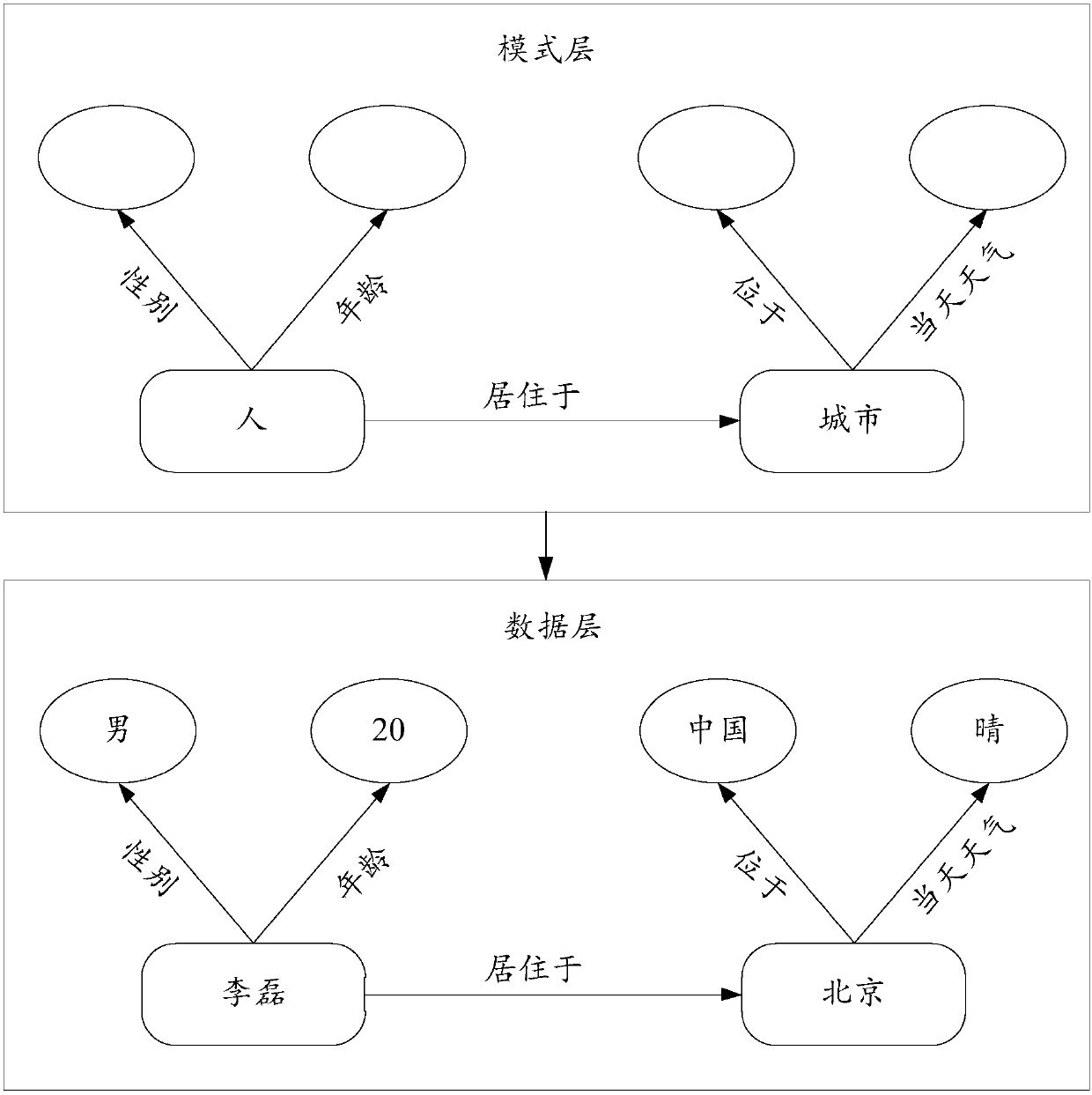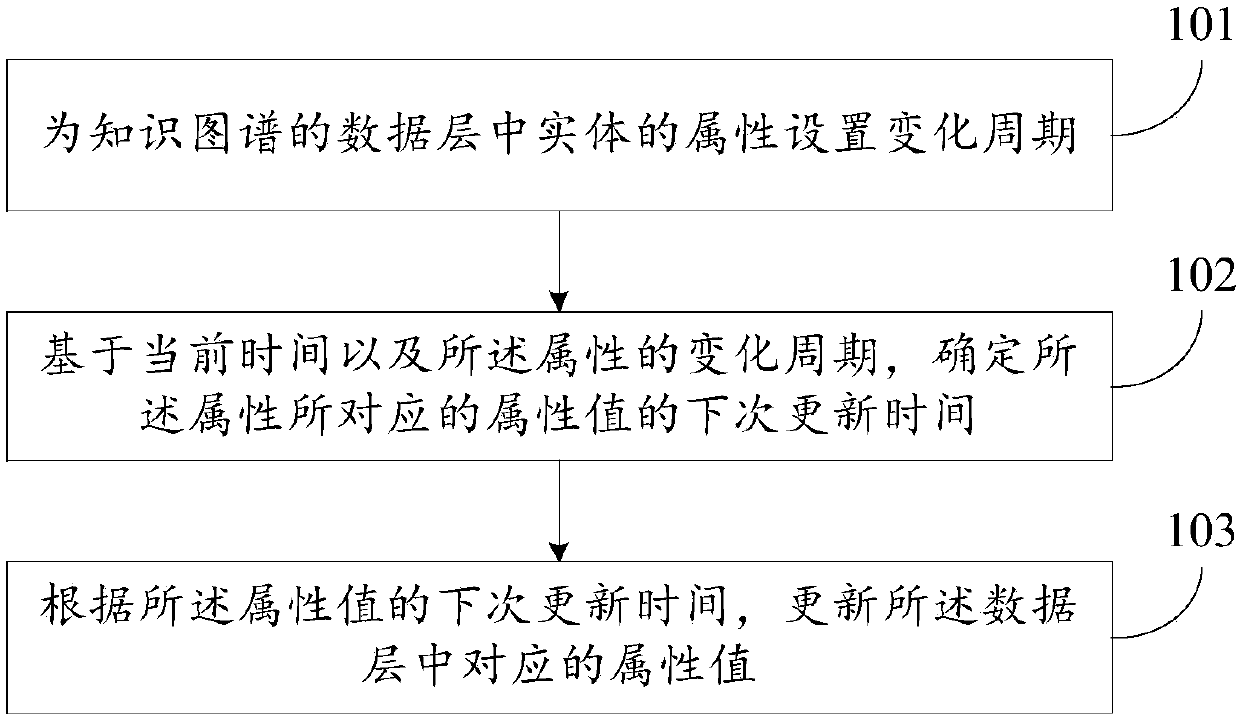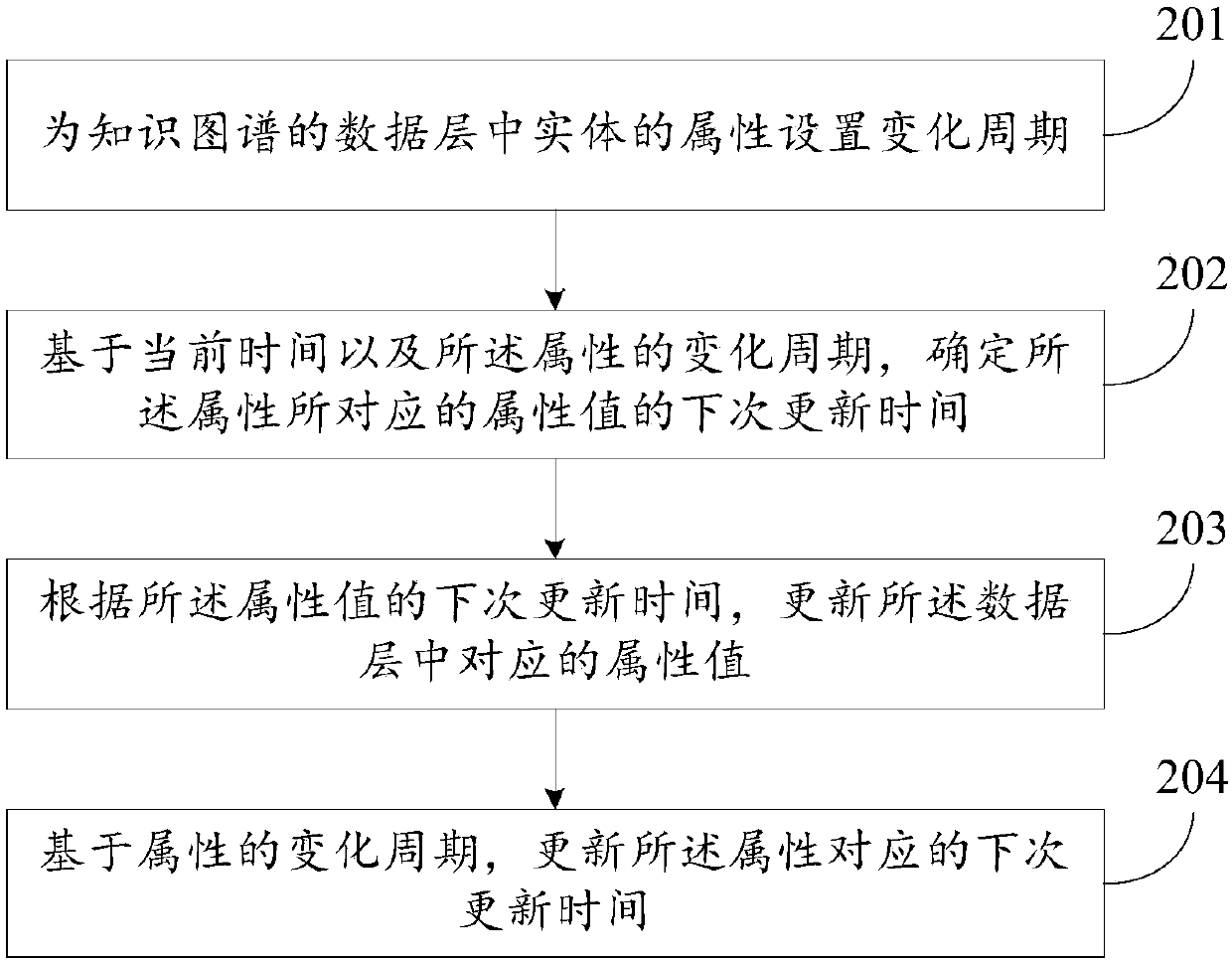Method and device for updating knowledge graph
A technology of knowledge graph and update time, applied in the field of updating knowledge graph, can solve the problems of low efficiency and poor timeliness of updating knowledge graph, and achieve the effect of enhancing timeliness and improving efficiency
- Summary
- Abstract
- Description
- Claims
- Application Information
AI Technical Summary
Problems solved by technology
Method used
Image
Examples
Embodiment Construction
[0032] Exemplary embodiments of the present disclosure will be described in more detail below with reference to the accompanying drawings. Although exemplary embodiments of the present disclosure are shown in the drawings, it should be understood that the present disclosure may be embodied in various forms and should not be limited by the embodiments set forth herein. Rather, these embodiments are provided for more thorough understanding of the present disclosure and to fully convey the scope of the present disclosure to those skilled in the art.
[0033] The embodiment of the present invention provides a method for updating the knowledge map, such as figure 2 As shown, the method mainly includes:
[0034] 101. Set a change period for the attribute of the entity in the data layer of the knowledge map.
[0035] Specifically, the knowledge graph is mainly divided into a schema layer and a data layer, and the data layer is a specific instance of the schema layer. In practical...
PUM
 Login to View More
Login to View More Abstract
Description
Claims
Application Information
 Login to View More
Login to View More - R&D
- Intellectual Property
- Life Sciences
- Materials
- Tech Scout
- Unparalleled Data Quality
- Higher Quality Content
- 60% Fewer Hallucinations
Browse by: Latest US Patents, China's latest patents, Technical Efficacy Thesaurus, Application Domain, Technology Topic, Popular Technical Reports.
© 2025 PatSnap. All rights reserved.Legal|Privacy policy|Modern Slavery Act Transparency Statement|Sitemap|About US| Contact US: help@patsnap.com



